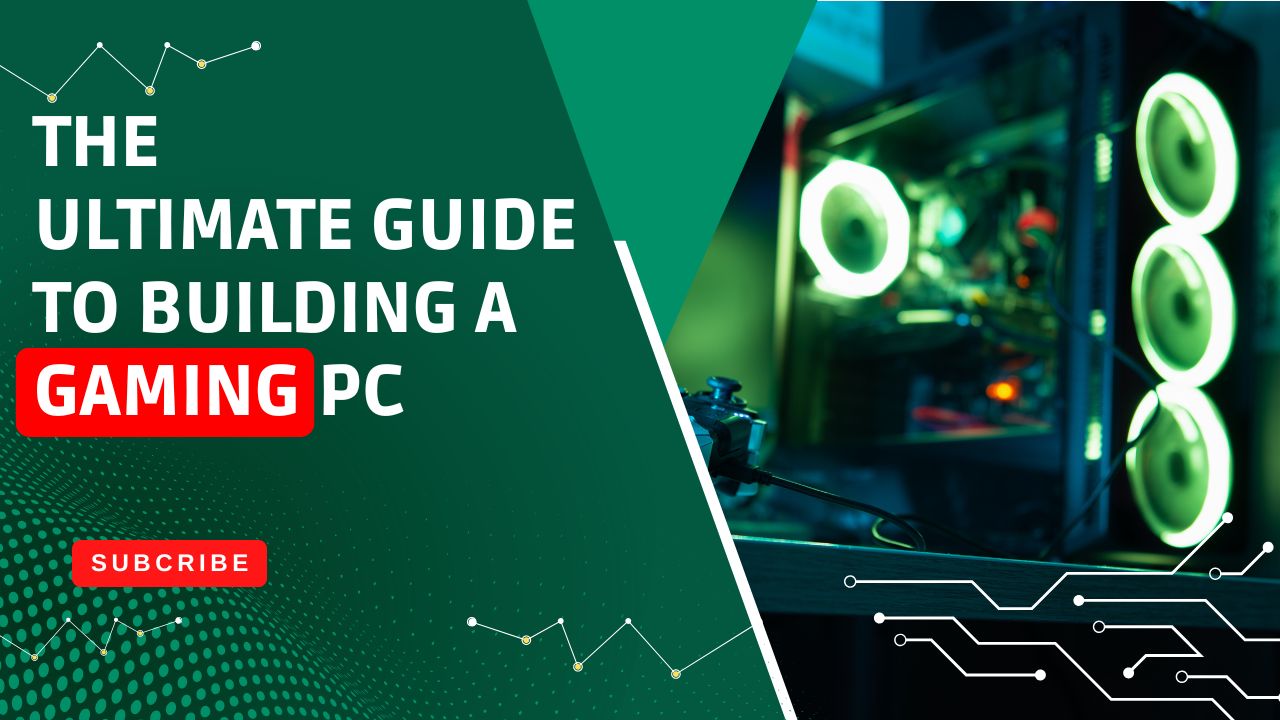The Ultimate Guide to Building a Gaming PC
Building a gaming PC can be a rewarding experience, offering both a sense of accomplishment and a powerful machine tailored to your gaming needs. This guide will walk you through the process step-by-step, ensuring you have all the information you need to build your dream gaming rig.
Customization and Performance
Building your own gaming PC allows for complete customization. You can choose components that best fit your gaming preferences and budget. Additionally, custom-built PCs often outperform pre-built systems because you can select high-quality parts and optimize them for better performance.
Cost-Effectiveness
While pre-built gaming PCs can be convenient, they often come with a premium price tag. Building your own PC can be more cost-effective, allowing you to allocate your budget towards components that provide the most value for your specific needs.
Essential Components for a Gaming PC
Central Processing Unit (CPU) building a gaming PC
The CPU is the brain of your computer. It processes instructions from programs and performs calculations. For gaming, a CPU with high clock speeds and multiple cores is essential. Popular choices include:
- Intel Core i5/i7/i9 series
- AMD Ryzen 5/7/9 series
Graphics Processing Unit (GPU) building a gaming PC
The GPU is crucial for rendering graphics in games. A powerful GPU ensures smooth gameplay and high frame rates. Top choices for gamers are:
- NVIDIA GeForce RTX series
- AMD Radeon RX series
Memory (RAM) building a gaming PC
RAM affects your system’s ability to handle multiple tasks simultaneously. For gaming, 16GB of DDR4 RAM is typically recommended, though 32GB can future-proof your system.
Storage
Storage options include Hard Disk Drives (HDDs) and Solid State Drives (SSDs). SSDs are faster and more reliable, making them ideal for gaming.
- 256GB to 512GB SSD for operating system and games
- 1TB HDD for additional storage
Motherboard building a gaming PC
The motherboard connects all components of your PC. Ensure compatibility with your CPU and GPU, and consider features like overclocking support and connectivity options.
Power Supply Unit (PSU) building a gaming PC
A reliable PSU provides stable power to your components. Opt for a PSU with a wattage rating that meets your system’s requirements and consider a certified unit for efficiency.
Cooling System building a gaming PC
Effective cooling is essential to prevent overheating. Options include air coolers and liquid cooling systems. Ensure your case has good airflow and consider additional fans if necessary.
Case building a gaming PC building a gaming PC
The case houses all your components. Choose one that fits your motherboard size (ATX, Micro-ATX, Mini-ITX) and has sufficient space for future upgrades.
Step-by-Step Guide to Building Your Gaming PC
Step 1: Prepare Your Workspace
Ensure you have a clean, static-free workspace. Gather all your tools and components before starting the build.
Step 2: Install the CPU
Carefully install the CPU onto the motherboard. Apply thermal paste if necessary, and attach the CPU cooler.
Step 3: Install RAM
Insert the RAM sticks into the appropriate slots on the motherboard. Ensure they are properly seated and locked in place.
Step 4: Mount the Motherboard
Secure the motherboard to the case using screws. Connect the power supply cables to the motherboard.
Step 5: Install the GPU
Insert the GPU into the PCIe slot on the motherboard. Secure it with screws and connect any necessary power cables.
Step 6: Connect Storage
Attach your SSD and HDD to the appropriate slots in the case. Connect them to the motherboard using SATA cables.
Step 7: Connect Power Supply
Connect all power cables from the PSU to the motherboard, GPU, storage devices, and any additional components.
Step 8: Install the Cooling System
Install any additional cooling fans or liquid cooling systems. Ensure proper airflow within the case.
Step 9: Cable Management
Organize and secure all cables to ensure a tidy build and improve airflow within the case.
Step 10: Test Your Build
Before closing the case, test your build by turning on the power. Check for any issues or errors, and ensure all components are functioning correctly.
building a gaming PC
Final Touches and Software Installation
Install the Operating System
Once your build is complete and tested, install your operating system (OS). Windows is a popular choice for gaming due to its wide compatibility with games and software.
Update Drivers
Ensure all your hardware drivers are up-to-date. This includes the GPU, motherboard, and any other components.
Install Games and Software
Finally, install your favorite games and any additional software. Optimize your settings for the best gaming experience.
Conclusion
Building a gaming PC can seem daunting, but with careful planning and attention to detail, it can be an enjoyable and rewarding process. By following this ultimate guide, you’ll be well on your way to creating a powerful gaming rig tailored to your needs. Happy building!
Top 10 Software Jo Har Computer Mein Hone Chahiye
Learn about PC – Here
